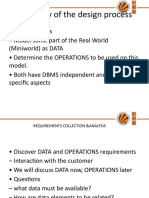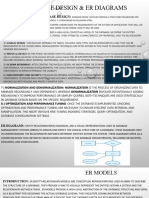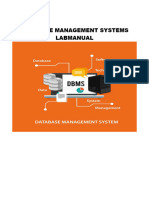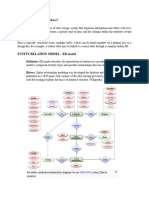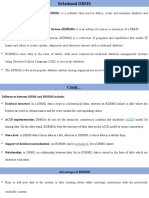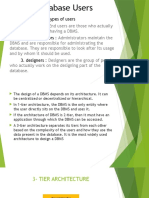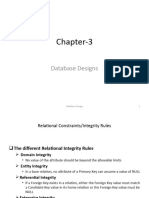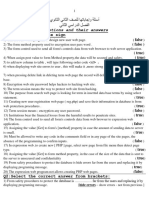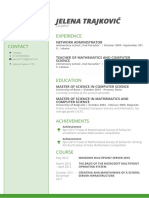0% found this document useful (0 votes)
21 views27 pagesModule 1
The document provides an overview of the relational database model, detailing its structure, including tables, rows, columns, and keys, as well as the importance of database schemas and relational query languages like SQL. It also discusses the Entity-Relationship (ER) model for database design, highlighting entities, attributes, relationships, and the design process, including normalization and the removal of redundant attributes. Additionally, it covers ER diagrams, specialization and generalization, and the challenges faced in ER design, emphasizing the significance of these concepts for efficient database management.
Uploaded by
kumaryaduvanshi582Copyright
© © All Rights Reserved
We take content rights seriously. If you suspect this is your content, claim it here.
Available Formats
Download as PPTX, PDF, TXT or read online on Scribd
0% found this document useful (0 votes)
21 views27 pagesModule 1
The document provides an overview of the relational database model, detailing its structure, including tables, rows, columns, and keys, as well as the importance of database schemas and relational query languages like SQL. It also discusses the Entity-Relationship (ER) model for database design, highlighting entities, attributes, relationships, and the design process, including normalization and the removal of redundant attributes. Additionally, it covers ER diagrams, specialization and generalization, and the challenges faced in ER design, emphasizing the significance of these concepts for efficient database management.
Uploaded by
kumaryaduvanshi582Copyright
© © All Rights Reserved
We take content rights seriously. If you suspect this is your content, claim it here.
Available Formats
Download as PPTX, PDF, TXT or read online on Scribd
/ 27

